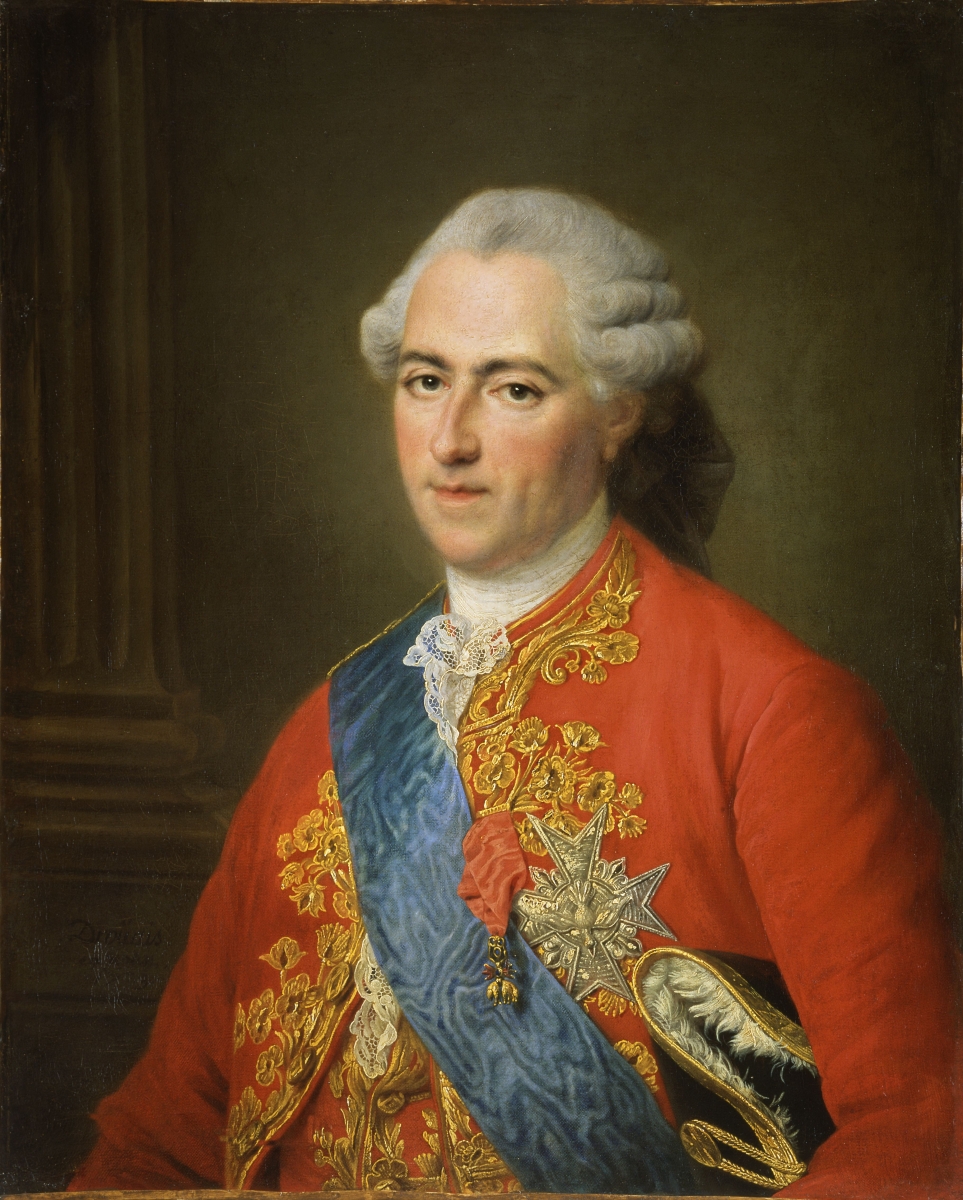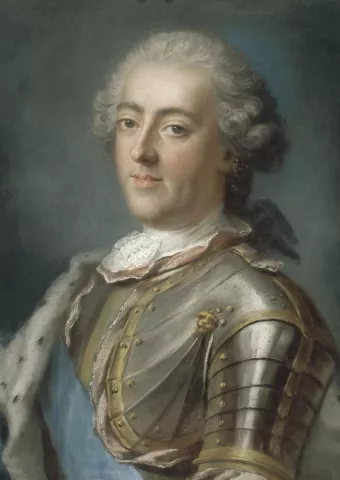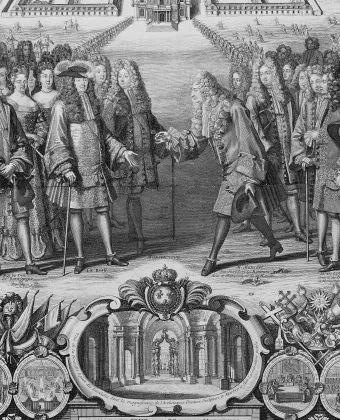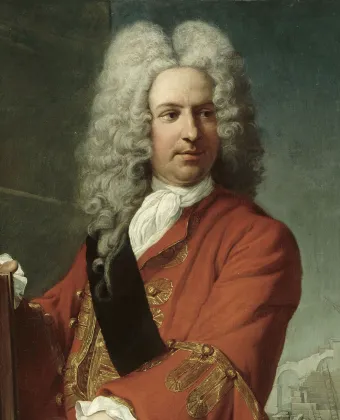Son of the Duke of Burgundy and Marie Adélaïde of Savoy, and great-grandson of Louis XIV, Louis XV became heir apparent upon the death of his father in 1712. He then became king in 1715 at just five years of age upon the death of Louis XIV. His education, overseen by his Governor, the Maréchal de Villeroy, and his preceptor, Cardinal de Fleury, nurtured his interest in the natural sciences, botany, medicine, astronomy, geography and history. His tutor, the Duke of Orléans, who ruled the kingdom as Regent during the king's childhood, provided the young Louis XV with a pragmatic political education. From the age of ten he took part in cabinet meetings.
Shortly after the government and the Court were moved back to Versailles, which had been temporarily abandoned as the seat of power after the death of Louis XIV, Louis XV was crowned in Reims. Although he used the King's Apartments for official appearances, he also had a suite of private rooms created where he could get away from the crowd and the lavish life of the Court.
The King and the Royal Family
Louis XV was betrothed in 1721 to the Infanta of Spain, but she was soon dismissed as a potential bride, considered too young to provide an heir in timely fashion. Instead in 1725 the young King married the Polish princess Marie Leszczyńska, who was seven years older than him. The King and Queen went on to have ten children, born between 1727 and 1737. Six daughters and one son, the Dauphin, survived to adulthood. As children they lived in the Princes' Wing, now known as the South Wing. At the age of six the Dauphin moved to the main wing of the Palace, where a suite of apartments was set aside for the heir to the throne on the ground floor. For the education of his daughters, Louis XV chose the Abbey of Fontevraud. When they reached adulthood they returned to Versailles, with the exception of the eldest, who married her cousin in 1739, the Infante of Spain, later the Duke of Parma.

Louis XV, roi de France (1710-1774)
© Château de Versailles, Dist. RMN / © Jean-Marc Manaï
A keen interest in science
Louis XV was a generous patron to scientists and engineers
He collected clocks and precision instruments, and the King's geographers worked with astronomers to map the country in detail. The monarch also backed maritime exploration and encouraged scientific expeditions to bring back plant specimens from distant climes. In the King’s Garden, in Paris, and in the Trianon Botanical Gardens, the king used the system of plant classification developed by the Swedish botanist Linné. Louis XV also took an interest in the first experiments with electricity. In 1746, at Versailles, Abbé Nollet performed a Leyden jar experiment for the King, successfully accumulating an electric charge.
Mistresses
From 1732 onwards a series of mistresses played an important role in the king's personal life. The most notable of these official mistresses, Madame de Pompadour, lived at Versailles from 1745 until her death in 1774. She played an important political role, first as royal mistress, then as friend and advisor to Louis XV, and she also exerted a substantial influence over the arts. She took the painter François Boucher under her wing and supported numerous other artists, including the sculptor Jean-Baptiste Pigalle. In 1763 Madame de Pompadour persuaded Louis XV to commission the construction of a new palace: the Petit Trianon, future residence of Queen Marie Antoinette.
A few years later in 1768, after the death of the Marquise, Madame du Barry became the King's official mistress. She also lived at Versailles, in sumptuous, spacious apartments just above the King's private apartments. She remained at the King's side until his death in 1774.
Louis XV bequeathed to his grandson Louis XVI a kingdom which was weakened and divided, fertile ground for the seeds of Revolution.
From 1732 onwards, a series of mistresses played an important role in the King's personal life. The most notable of these mistresses, Madame de Pompadour, lived at Versailles...















